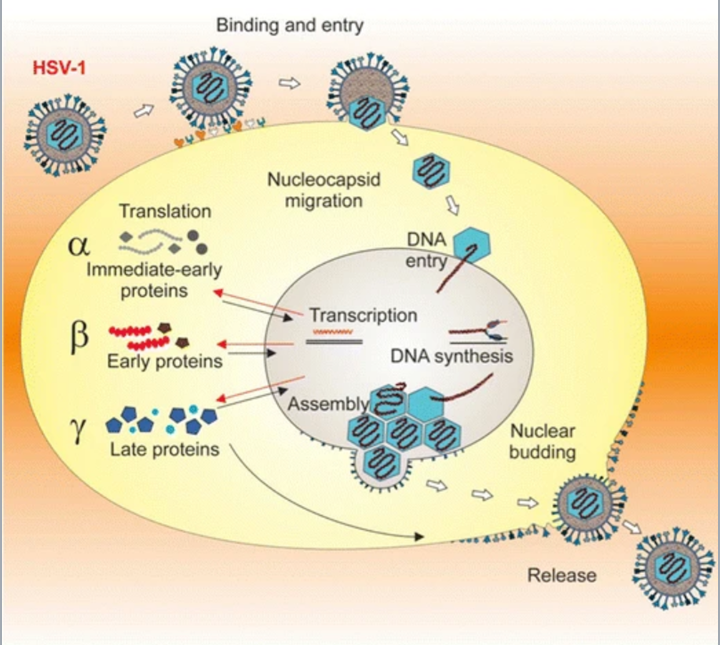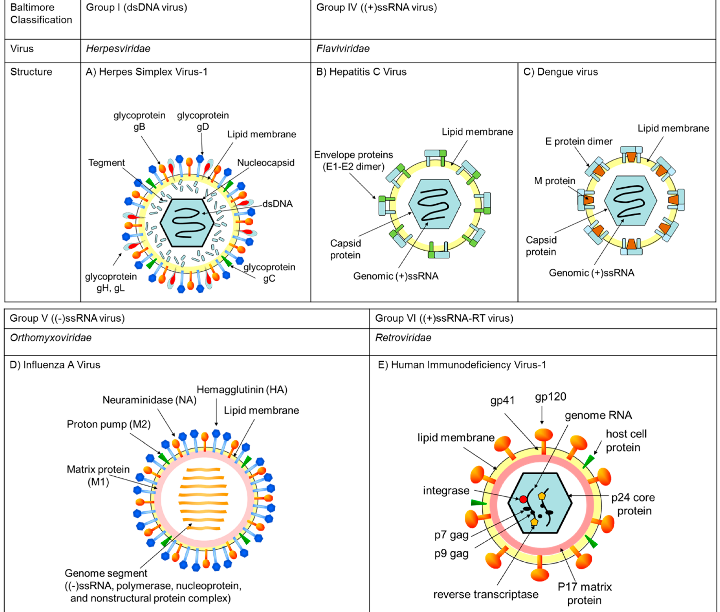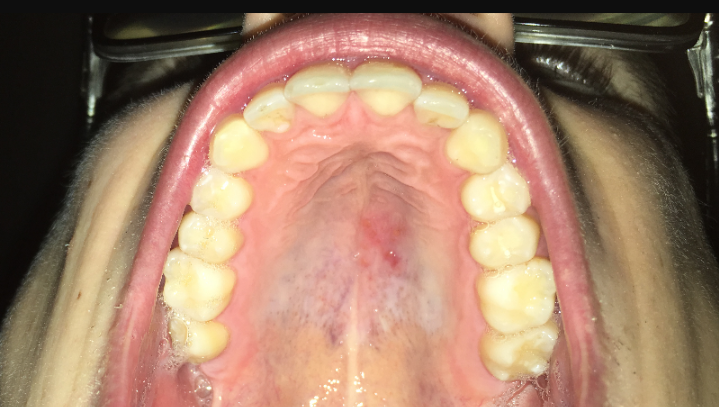Herpes Virus infections
Herpes simplex viruses (HSVs -TYPE 1 and 2) are widespread and are responsible for various disease including; Keratoconjunctivitis, gingivostomatitis, genital disease, infections of new born and encephalitis. Herpes simplex viruses cause cytolytic infections; therefore clinical manifestations are due to inflammatory response as well as necrosis of infected cells.

HSV 1virus
PATHOGENESIS.
Herpes simplex virus 1(HSV - 1) are limited to the oropharynx and transmitted via respiratory droplets (saliva) or direct contact with virus from the vesicle of a person shedding virus. Whereas herpes simplex virus type 2 (HSV -2) is spread through genital routes, that is , transmitted by sexual contact in adults and during passage through the birth canal in neonates.
This viruses have to come in contact with broken skin or mucosal surface before infection is initiated. The viruses replicate first at the site of infection and then invade local nerve endings from where the will be transported to dorsal root ganglia for further replication before latency period. The type of lesions induced by herpes simplex virus type 1 and herpes simplex virus type 2 are similar to that of Varicella- Zooster virus but vary in degree of cytopathology.
HSV -1 and HSV -2 infections may be primary or recurrent. Primary infections are found individuals with no antibodies to the infection but as results develop antibodies and the infection enter into latent period.

Baltimore classification
RECURRENT HERPES SIMPLEX LABIALIS.
Recurrent infection manifests are cluster of vesicles usually at the lip. Recurrent herpes labialis presents fever blister or cold sores and encephalitis.
Primary genital herpes caused mainly by HSV -2 can be severe and illness can last for about three weeks. Genital herpes is characterized by vesiculoulcerative lessons in the penis in males or in females of the cervix, vagina, perineum and Vula. The lesions are painful accompanied with fever, dysuria inguinal lymphadenopathy recurrent of genital herpes is common but mild with a limited number of vesicles appearing and self limiting in about ten days.

Orofacial herpes simplex virus infection
LABORATORY DIAGNOSIS
Inoculation of tissue culture with throat washings, cerebrospinal fluid and stool is used for insulation of the virus. Identification of the virus isolated is done using im u no florescent staining with specific antiserum. Other laboratory investigations such as polymerase chain reaction (PCR) and serology using ELISA or immunoflorescent techniques may be carried out.
TREATMENT.
Many antiviral drugs are effective for treating herpes simplex viral infections. Use Acyclovir for encephalitis and disemenated disease; while trifluorothymidine is used for keratitis. Other active drugs are valacyclovir and vidarabine. Primary infections and localized recurrences are self-limited.
PREVENTION.
Recurrence can be prevented by avoiding the specific inciting agent such as intense sunlight. Acyclovir can reduce recurrence.
Thank you for stopping by to read my post, hope you find it interesting.
REFERENCE.
HSV 1 and HSV 2
Overview of HSV 1 and HSV 2
Reoccurring symptoms
HSV is a very stupid type of disease and it can be very annoying and embarrassing.
It is also important to note that when there immunocompromise, it tends to have a very terrible manifestation
Yes, you're right...That's why man needs to avoid it.